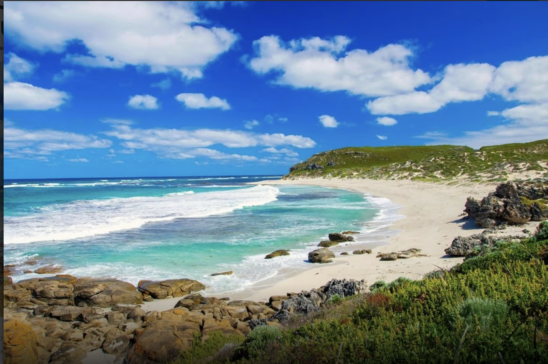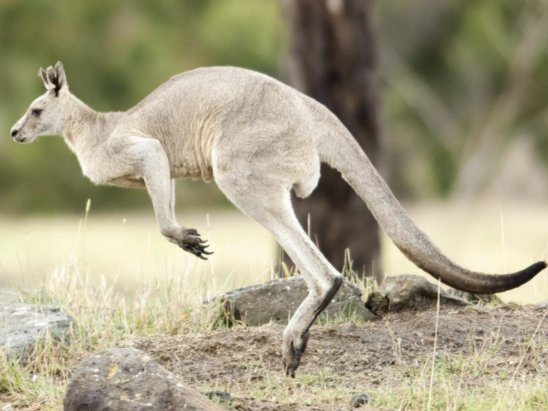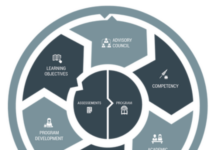
I am writing an autobiography, mainly for my family, but it does cover some key moments in the development of open and online learning. I thought I would share these as there seems to be a growing interest in the history of educational technology.
Note that these posts are NOT meant to be deeply researched historical accounts, but how I saw and encountered developments in my personal life. If you were around at the time of these developments and would like to offer comments or a different view, please use the comment box at the end of each post. (There is already a conversation track on my LinkedIn site and on X). A full list of the posts to date will be found toward the end of this post.
Distance education in Australia
In the 1990s and early 2000s, I developed strong connections in both Australia and New Zealand. Two of the researchers in the AVMRG at the Open University, Larry Kern and Anne Gibson, had returned with their families to their native Australia, and Jocelyn Calvert and John Bottomley, formerly of the Open Learning Agency, moved to Deakin University in Geelong just before I left OLA. In 1986, I went to visit Larry and his wife in their place in the Magill hills outside Adelaide, and then on to see Anne and her family in Sydney. I flew from London to Perth, then Adelaide, where Larry picked me up, and immediately took me to a champagne party on a neighbour’s property. The combination of an 18 hour journey, jet-lag, and a hangover lasted nearly the whole trip.
Australia and Canada have much in common which is reflected in their activities in open and distance education. They are both English-speaking countries, former British colonies, and have a vast geography, with several major cities strung along the coast a long distance from each other, and a sparsely populated interior. As a result, like their Canadian counterparts, many Australian campus-based universities have a long history of distance education. The Open and Distance Learning Association of Australia (ODLAA) had very close links in the 1980s and 1990s with the Canadian Association of Distance Education (CADE).
Australia also has a very strong vocational and educational training system (VET) and Technical and Further Education system (TAFE), somewhat similar to the Canadian community colleges and institutes of technology. The ‘Australian Flexible Learning Framework’ developed in 2001 actively promoted the VET sector’s move towards e-learning.
The Australian Skills Quality Authority (ASQA) is the national regulator for vocational education and training (VET). In a recent report (ASQA 2023) it states:
‘Research suggests that in the period from the 2000s up to 2019, there was stagnation and arguably a small decline in VET online learning activity. The COVID-19 pandemic has decisively reversed this in many industries and the general view is that this growth is set to become a longer-term trend.
There is even the Open Universities Australia, which has existed in some form since 1993, but it is a bit of an odd bird, being mainly a consortium of distance education courses from a variety of universities which also have their own distance education programs.
So it was natural then that I would get invitations to visit Australian universities and VET/TAFE providers and to present at various ODLAA conferences. I developed a number of friendships as a result.
Tony Dean was an instructional designer at the Charles Sturt University, Wagga Wagga, and shared my love of golf. Once we were playing at a local golf course, and I was about to tee off when four kangaroos wandered on to their fairway and sat down. Tony Dean said:
‘Go ahead and tee off. They’re a protected species, but they’re safe where they are when you hit, as they’re in the middle of the fairway. I’ll have to wait until they move.’
One of my favourite places in the world is Margaret River, a three-hour drive along the coast south of Perth, right at the south-west corner of Australia. It has beautiful beaches, good surf, several wineries, a golf course, and a small town with a couple of excellent restaurants. Part of its attraction is that it is quite hard to get to. One day I was driving back from Margaret River to Perth when a huge kangaroo – what they call a boomer – burst out of the bush by the side of the road and with two enormous jumps crossed the road just in front of me and then disappeared into the bush on the other side. I nearly had a heart attack.

I also nearly had another heart attack once while staying at Larry Kern’s house in the Magill Hills. I had an early morning flight and went to take quick shower without disturbing my hosts. I had just got into the shower when I saw something move just to the right of my head. It was an enormous spider. I let out a scream, which brought Larry rushing to the shower.
‘Oh, it’s only a Huntsman’, he said. ‘It might bite you but most humans survive.’ (The leg-span of a Huntsman is about six inches).

I learned a lot from my trips to Australia. For example, Bruce King was Director of Distance Education at the University of South Australia for many years and oversaw the movement from conventional distance education to the flexible delivery of over 1,200 courses online.
Bruce developed a model of faculty support that resolved the centralisation vs decentralisation dilemma of faculty support: do instructional designers work together centrally where they can share experience and maybe specialise and become experts in specific areas of educational technology, or should they be hired by the individual faculties and become expert in supporting a specific discipline?
The problem though with the decentralised model is that distance education course development is not even or steady, but often comes in bursts (for a new online masters’ program, for instance). Also deans tend to get rid of instructional designers hired by the department when they need more research or teaching faculty, and the university would then lose an experienced (and often hard to replace) instructional designer.
Bruce’s solution was to enter into yearly or longer contracts with deans. The instructional designers would be hired centrally and report ultimately to Bruce, but would be contracted to work for at least a year within a faculty. Deans could not then fire the IDs, and the IDs could be re-allocated to where they were most needed when necessary.
Cancer, 9/11, and the collapse of Ansett Airlines
In 2001, I received an invitation from the Faculty of Medicine at the University of Auckland. The university had obtained a grant from the The Auckland Savings Bank and they invited me to be a visiting professor to work with faculty on using technology for teaching. This was largely due to the influence of Cathy Gunn, an instructional designer working at the university. I was also asked to run a workshop with medical and nursing staff at Waikato Hospital in Hamilton, south of Auckland. I booked my tickets, via Air Canada.
Because of the long distance to Australia and New Zealand, I liked to combine visits. I had been invited to give a keynote at the ODLAA conference in Sydney and to give keynotes and workshops at the University of Sydney and Charles Sturt University, Wagga Wagga. I also planned to go from there to the University of South Australia in Adelaide, on to Perth, then back to Sydney then on to New Zealand and back to Vancouver. At that time there were no direct flights from Vancouver to New Zealand or Australia. I would fly Air Canada to Los Angeles, and Air New Zealand from LA to Auckland (they were both Star Alliance partners).I would then fly Auckland to Sydney on Air New Zealand, and then on Ansett (owned by Air New Zealand) around Australia, returning from Sydney to Auckland, and Auckland to Vancouver. I got a really good deal on the fares as they were all through Star Alliance.
However, a few days before I was due to leave for New Zealand I received a telephone call in my office.
‘My name’s Dr. Mandelson. I’m a surgeon at the University Hospital. I’ve just received your ultra-sound results from Dr. Baff. I’d like you to come and see me as soon as possible. It looks like you may have a tumour on your right kidney. I have a slot available tomorrow afternoon. Can you come?’
I was in shock. I felt well and had only had the ultra-sound because my creatine levels were high on my recent blood test. I went to see Mandelson.
‘I need to open you up to confirm the ultrasound test. If you do have a tumour I’d like to go ahead and remove it. Depending on how developed it is, you could lose part of or even your whole kidney, but the longer we leave it, the worse it will get. The good news is that you should be able to manage quite well with just one kidney.’
I took a few moments to take this all in.
‘I’m due to go on a two-week work trip to New Zealand and Australia in a few days. I’ll have to cancel it.’
‘Hmm. The bad news is that I can’t get an operating theatre for you for at least two or three weeks. You know, I suggest you go on the trip. It will be better than sitting at home stewing about the cancer.’
So, after talking it over with my wife, I decided to go. After a few days spent in Auckland I travelled to Hamilton for my workshop at Waikato Hospital. I was asleep in my hotel in Hamilton, when the phone rang. It was 2.00 am. Pat, my wife, was on the line.
‘Switch your television on – New York is being attacked.’
‘What? It’s 2.00 am. I’m working tomorrow’, I said and promptly went back to sleep.
Pat called again. ‘They’ve cancelled all flights in and out of the USA,’ she said. I didn’t give a damn.
‘Look, I’m not coming home for nearly two weeks. It will all be sorted by then.’
However, I needed to be back in time for my operation, which had not been scheduled yet. My immediate response began to fade and I became increasingly woried about getting back in time for the operation as the trip progressed.
Two days after 9/11 I flew from Auckland to Sydney. Air New Zealand was working normally, as far as I could tell. However, when I got to Sydney, I was contacted by Tony Dean.
‘What airline are you flying in Australia?’
‘Ansett.’
‘No, you’re not – Ansett has just gone bust, and all Ansett flights have been cancelled. Try and get flights on Qantas.’
I went to the Air New Zealand office in Sydney. They didn’t want to know.
‘Nothing to do with us’ (even though Air New Zealand were Ansett’s owners). ‘Try Quantas’.
I then traipsed round to the Qantas office. There was a queue several blocks long. After almost three hours, I got to a service desk. The clerk slowly looked at my tickets one by one. He looked up.
‘I’m sorry, but you aren’t going anywhere. I suggest you find a hotel and take Air New Zealand back home as soon as you can.’
I called Tony Dean.
‘Try the train – there’s a train from Sydney to Wagga.’
I didn’t even know there was a train station in Sydney. There were two trains a day, one at 7.00 am and the other overnight. The booking clerk told me that the morning train was now fully booked for a week but he could get me on the overnight train the following day. I found my sleeper berth, stowed my bags, then went to find something to eat. When I got to the buffet car, there was a long line-up. Eventually the guy in front reached the counter.
‘I’ll have a beer.’
‘Sorry, sold out.’
‘OK then, I’ll have a wine.’
Sorry, all the wine is sold out.’
‘Well what have you got to drink?’
‘Water, coffee and tea.
’Bloody hell, mate, are you telling me I’ve got to go six hours without a bleeding drink?’
‘No, sir, we are taking on extra supplies at Goulburn.’
I got to my meetings at Charles Sturt and saw a little of Wagga Wagga (mainly the bars) with Tony Dean, and made my way back by train to Sydney, where I picked up my return flight on Air New Zealand to Auckland.

Somewhat to my surprise my plane from Auckland to Los Angeles was on time. I hate Los Angeles airport, alongside Frankfurt, Heathrow, Charles de Gaulle, and, worst of all, Toronto Pearson. The main problem at LA was if you had to change terminals, but it also took forever to get through immigration, even, or especially, if you were in transit to Canada.
As a result, even though my plane from Auckland was due in at 7.30 am, I had booked my Air Canada flight out of LA for 11.00 am, but when I got to LA, eight days after 9/11, the airport was deserted. I went through customs and immigration in about five minutes. Apparently no-one in the USA was flying. I got to the Air Canada counter and presented my ticket.
‘Ah, I see you’re booked on the 11.00 am flight.’
Here it comes, I thought – an indefinite stay in LA until flights resume.
‘Is there a specific reason for taking this flight? You see, we have an earlier flight at 9.30 am and we have plenty of seats on it.’
So, much to my surprise, I arrived back in Vancouver, not just on time, but 90 minutes early. However, half my tour of Australia had been cancelled, but that was a small price to pay for getting home safely after 9/11.
When I got home, I found out I was booked in for surgery the following week. All went well, the tumour was taken out, and I still have one and two-thirds kidneys.
On reflection, though, it is surprising how one tries vainly to keep to a plan, when everything around it is collapsing. People were dying horribly in New York, thousands had suddenly lost their jobs at Ansett, my wife was worried sick about my health, and all I wanted to do was catch my planes. I do feel ashamed of myself, looking back.
Up next
Not sure, but I think I’m going to have to deal with being fired from UBC in 2003, which will be challenging for me to get right, as it was personal, and I was very emotionally involved. However, it does have some significant lessons about the management of online and distance learning in an elite university. In the meantime, make the most of summer.
Reference
Australian Quality Skills Authority (2023) Strategic View of Online LearningSydney: Australia
Previous posts in this series
Here is a list of the posts to date in this series:
A personal history: 1. The start of the Open University
A personal history: 2. Researching the BBC/Open University broadcasts
A personal history: 3. What I learned from Open University summer schools
A personal history: 5. India and educational satellite TV
A personal history: 6. Satellite TV in Europe and lessons from the 1980s
A personal history: 7. Distance education in Canada in 1982
A personal history: 8. The start of the digital revolution
A personal history: 9. The Northern Ireland Troubles and bun hurling at Lakehead University
A personal history: 10. Why I emigrated to Canada
A personal history: 11. The creation of the OLA
A personal history: 12. My first two years at the Open Learning Agency
A personal history: 13. OLA and international distance education, 1990-1993
A personal history: 14. Strategic planning, nuclear weapons and the OLA
A personal history: 15. How technology changed distance education in the mid 1990s
A personal history: 16. NAFTA, video-conferencing and getting lost in Texas
A personal history: 17. Innovation in distance education at UBC
A personal history: 18. Developing the first online programs at UBC – and in Mexico
A personal history: 19. Some reflections on research into the costs and benefits of online learning
A personal history: 20. Identifying best practices for ed tech faculty development
A personal history: 21. Open and distance learning in Japan and South Korea









 Dr. Tony Bates is the author of eleven books in the field of online learning and distance education. He has provided consulting services specializing in training in the planning and management of online learning and distance education, working with over 40 organizations in 25 countries. Tony is a Research Associate with Contact North | Contact Nord, Ontario’s Distance Education & Training Network.
Dr. Tony Bates is the author of eleven books in the field of online learning and distance education. He has provided consulting services specializing in training in the planning and management of online learning and distance education, working with over 40 organizations in 25 countries. Tony is a Research Associate with Contact North | Contact Nord, Ontario’s Distance Education & Training Network.


Thanx for this.
Indeed, Canada and Australia are very similar.
But I got the impression that many more Australian universities sought to specialise in distance education than in Canada. In 1989 the then federal government sought to consolidate all university distance education into 1 centre, like an Australian version of Athabasca.
But so strongly were many Australian universities committed to distance education that the best the federal government could do was concentrate provision in 10 distance education centres. Bruce King led one such centre at the University of South Australia, and Jocelyn Calvert and John Bottomley provided academic leadership at another, at Deakin University. Colin Latchem whose contributions you have celebrated headed the centre at Curtin University.
https://www.tonybates.ca/2018/07/12/book-review-open-and-distance-non-formal-education-in-developing-countries/
Thanks for the update – really appreciated. The last time I was in Australia was 2005, almost 20 years ago, so I’ve been wondering what’s been happening with distance education and online learning there.
Canadian universities and colleges today have moved a lot in those 20 years. Now most (around 75%) have at least some fully online courses and programs for credit. Both BCIT in Vancouver and Université Laval in Quebec have more distance students than Athabasca (see https://cdlra-acrfl.ca/wp-content/uploads/2020/07/2019_national_en.pdf), and of course many are now moving into a mix of digital and in-person learning. The Covid crisis merely accelerated even further what had been happening over the previous 15 years. I would be interested in any publication that gives a similar update on online and distance education in Australia today.